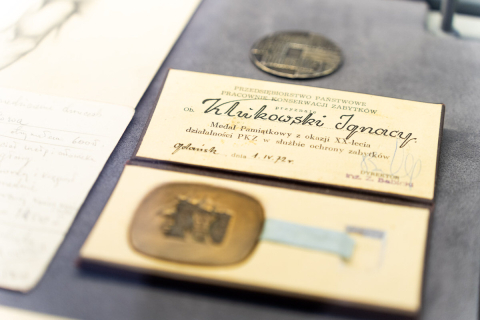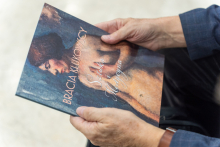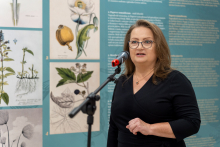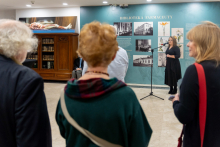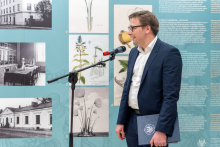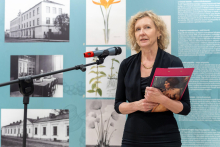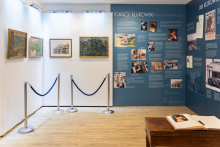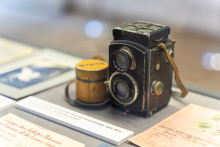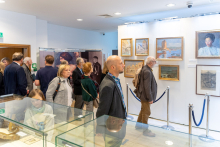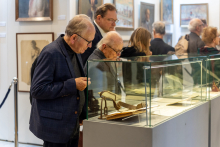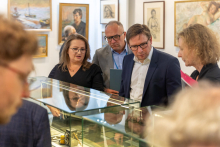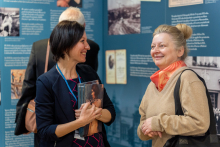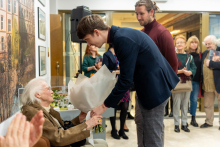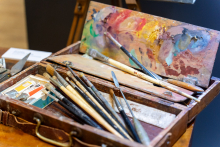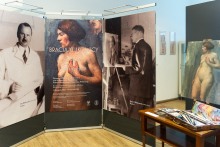- The museum has received a very valuable gift from a private individual: a collection of paintings by the distinguished turn-of-the-century painter Ignacy Klukowski, which we want to present to a wider audience - says Grażyna Jermakowicz, director of the Museum of the History of Medicine MUW - And on this occasion we present Ignacy's older brother John, a great physician whose history is connected with our university.
The exhibition features 44 works, paintings and drawings, as well as plaques dedicated to the profiles and legacies of the brothers as well as mementos of them. The exhibition is held under the honorary patronage of Professor Rafal Krenke, Rector of the Medical University of Warsaw. It is open to all interested parties and can be admired in the museum located on the first floor of the Library and Information Center (room 27).
Who the Klukowski brothers were
Jan Klukowski is a heroic figure. Being a medical student, he took part in the Polish-Bolshevik war as a medic. For bravery and courage he was awarded the Cross of Valor. After the war, he continued his studies in Warsaw, earning a doctorate in all medical sciences in 1925. During the Nazi occupation, he worked at the Infant Jesus Hospital, in the Department of Internal Diseases headed by Professor Witold Orłowski. At the department, he conducted classes for students as part of secret teaching. This was not only an educational activity, but also an act of resistance, a symbolic contribution to the struggle for the survival of Polish science and medicine in the dark times of occupation. Arrested by the Gestapo in 1943, he was sent to Pawiak prison and then to Auschwitz-Birkenau concentration camp, where he worked as a prisoner-doctor. He died in January 1945 during the Death March on which he set out with his patients. His name appears on one of the plaques dedicated to the employees of the Infant Jesus Hospital who died during the Nazi occupation, placed in 1946 at the back of the orthopedic clinic.
Ignacy, Jan's younger brother, a talented painter, was a graduate of the Faculty of Fine Arts at Stefan Batory University in Vilnius and the Paris Academy of Fine Arts. He exhibited his paintings at home and abroad, winning awards and critical acclaim. He spent the war in Vilnius, working as an agricultural laborer. Almost all of his pre-war output of over 300 paintings was burned during the Warsaw Uprising in his father's apartment. After the war, he settled in Gdansk, where he actively participated in artistic life and began working as a conservator. He received the Golden Cross of Merit for this work. He died in 1978.
- On the one hand, Klukowski's paintings are embedded in the academic tradition. On the other hand, one can see in his paintings a strong connection with the colorist movement, which began in the 1920s. This movement is characterized by realism, moving away from literary, historical and symbolic references. It is dominated by simple, naturalistic motifs: landscape, nude, portrait - explains the exhibition's author Monika Klimowska of the Museum of the History of Medicine MUW. She adds: - His painterly work, brave and original, was a response to his contemporary challenges, and at the same time a profound expression of his personal reflections.
Opening of the exhibition
The opening of the exhibition was held on November 14. It was opened by Grażyna Jermakowicz and Prof. Michał Grąt, Vice Rector for International Relations, Development and Promotion. Monika Klimowska talked about the Klukowski brothers
